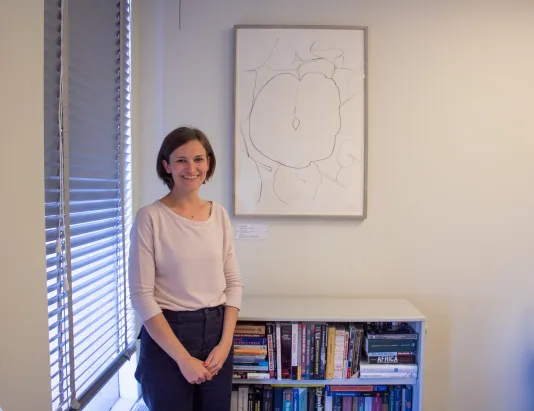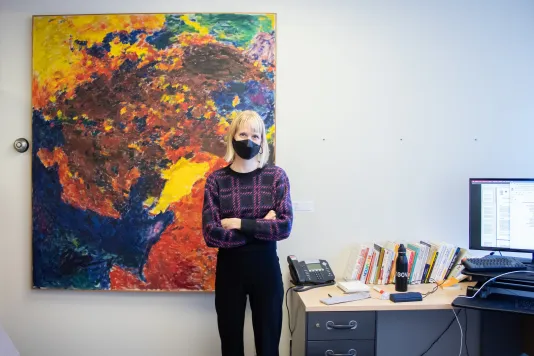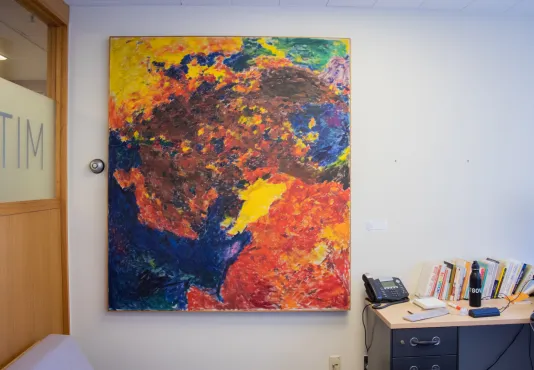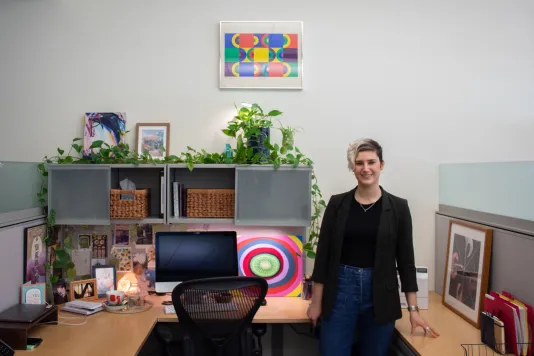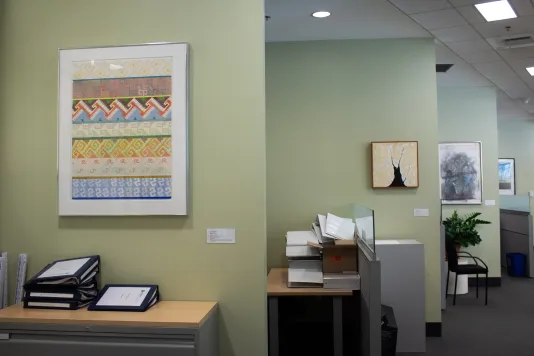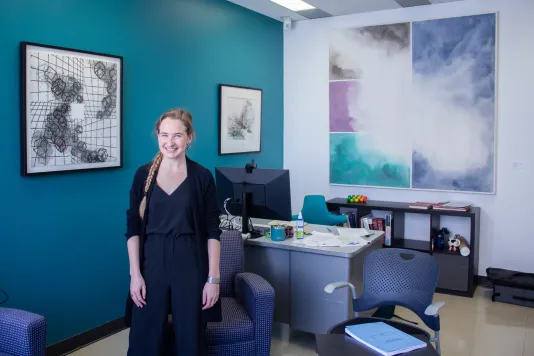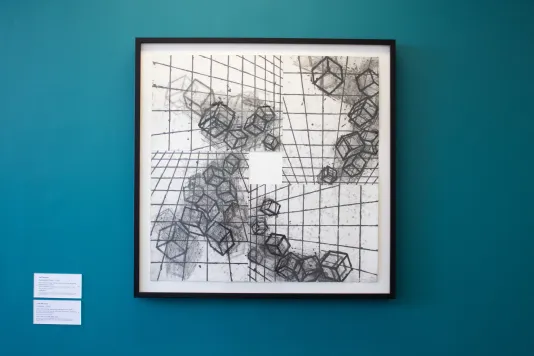You are fortunate to have fourteen pieces in your office! How did you come to borrowing these pieces from the collection?
The borrowing process was definitely spread out. This building is a little over 10 years old, and when it was completed, they got a round of artwork installed. That was when I was new to this position. I am a visual artist, so my boss invited me to work on replacing and selecting new artwork for the space.
Before Covid, we went through and picked out about half of the pieces that we wanted and then Covid hit so none of it got installed, but Lisa and the List were so kind to hold it until after [we could return to our offices.] Then, we got half installed and because of the timing with Covid, we were pleased to discover so many works had become available. We thought it would take us longer to identify the second half of the works but then we ended up just finding a lot of really great fits.
So it took two rounds of picking out the pieces. How did you and your boss decide on the work each time?
We knew we wanted a variety. The artworks here before were beautiful, but it was very clear that they were chosen to be more basic and contemporary shapes and colors. It was all kind of in the same genre which was perfect for a brand new office. We decided that the purpose was not to just have things on the wall but to have things that different people in the office would enjoy.
We definitely prioritized different types of artwork. We have some photographs, some contemporary works, and lots of different styles within that. We also wanted to prioritize different artists. We wanted to make sure we had women and men and different minorities represented.
My boss and I would start by saying what pieces jumped out at us and then I would tell Lisa and she would send us the information and I would go through the artist and ask ‘ok is this a variety?’ We also took into consideration the group dynamic of different areas of the office. That was hard to do because there are so many different opinions and not everyone is necessarily invested one way or the other. We tried as much as possible to match the different areas with artwork we thought that they would like.
Do any of these pieces relate to the work that is done at the Koch Institute?
For the most part, it is more personal to the groups of people here. As someone who intentionally wants to see things in art I will sometimes think ‘‘yeah this kind of looks like a cell’ because we do a lot of biology and engineering here.
The Koch Institute has a lot of different scientific disciplines that come together. Having artwork that reflects all different kinds of disciplines coming together adds to the integrative atmosphere that we promote.
